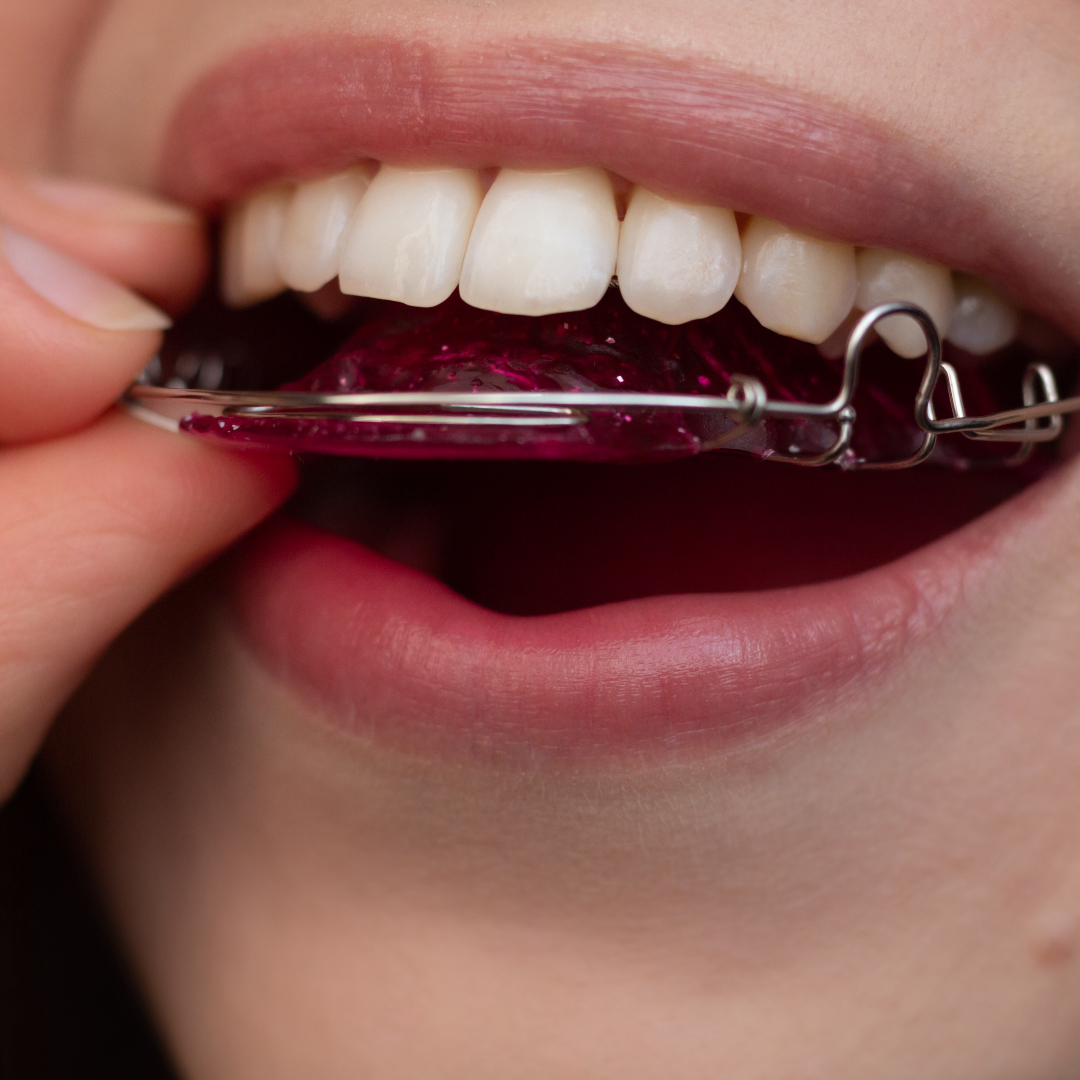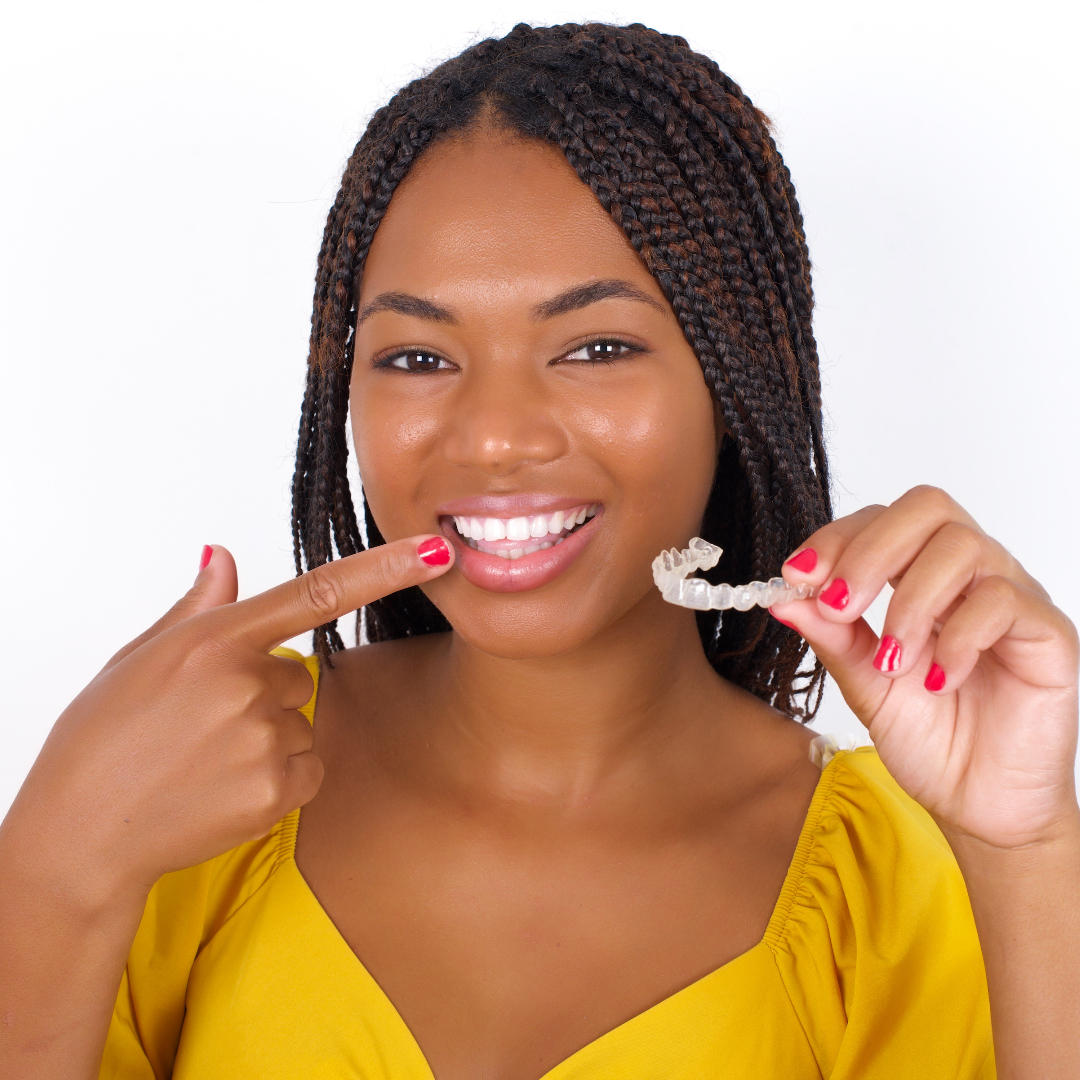Retainers: How to Keep Your Smile Straight After Braces

Treatment with corrective braces from an orthodontist takes about 18 to 24 months on average. Some patients can complete treatment in as little as a year, while in certain less common situations, it might take three years. But that doesn’t mean the process is over! Most patients are really excited to get their metal braces removed so life can start getting back to normal, with a new and improved smile. The work isn’t done yet, though. Once the braces come off, the retainer phase begins.
What’s a Retainer?
Once a person’s teeth have been shifted with braces, they want to naturally try to move back into their original places. If this is allowed to happen, all of the hard work and potentially years of orthodontic work could be ruined. While there used to be some debate about it, the scientific literature on retainers now indicates that they work to keep the teeth from shifting once your braces come off.
A retainer is another custom-fitted orthodontic appliance that your doctor will prescribe once your braces come off. There are three types of retainers:
- Traditional removable retainers
- Aligner retainers
- Fixed retainers
A traditional retainer has a metal wire that goes in front of the teeth. It’s attached to a synthetic arch that fits snug against the roof of the mouth. The wires can be moved to finish adjusting the teeth, especially the front teeth, to finish up the orthodontic treatment. These are also called Hawley retainers.
Aligner-style retainers look a lot like Invisalign retainers. These are a clear, plastic aligner that is nearly invisible. It’s also called an Essix retainer. Your orthodontist has this type of retainer made from a mold of your teeth, once your orthodontic treatment with braces is finished. Both traditional retainers and aligner-style ones can be removed for brushing and flossing the teeth.
A fixed or permanent retainer consists of a metal wire attached to the back of the teeth. Since it is affixed to the back of the teeth, it removes all of the usual worries that accompany the other types of retainers, such as losing or damaging it, or forgetting to put the retainer back in after a meal. A permanent retainer can stay in “permanently” to avoid relapsing and shifting of the teeth .How Long Will I Have to Wear a Retainer After Braces?
The removable types of retainers will usually be worn 24/7 during a month and then only at night for life. These retainers should be changed every 2-5 years depending on the material they are made with and the care you give your retainers. Always follow up with your orthodontist to make sure your teeth are retaining all the progress you’ve made. Removable retainers stay in all the time for the first 30 days except for when eating, brushing, and flossing your teeth. After that, only 8-10 hours per night is needed.
With a fixed retainer, once they are bonded to your teeth, they should be maintained every 3-5 years by adding more glue to keep the wire covered. Permanent retainers also should be worn for a lifetime for your teeth to remain straight and the position you achieved at the end of orthodontics. One drawback to fixed retainers is that they cannot be removed for eating or oral care. This can make brushing and flossing more difficult. If plaque remains on the teeth in places where it’s tough to brush or floss, it can lead to tooth decay and other gum problems.
Caring for Your Retainer
Removable retainers can be especially fragile. The acrylic material is not very strong and it is molded to be an exact fit with your newly adjusted teeth. Leaving a retainer on a table and then accidentally setting a textbook on it can be enough to alter its shape. So can dropping the retainer. Exposing it to extreme heat when cleaning it can also warp its shape. If your retainer becomes misshapen for any reason, call our office immediately so we can have you fitted with a replacement.
Remember to follow your regular oral health care routine of brushing and flossing at least twice a day. This is easier with a removable retainer, but also needs to be done if you’re wearing a fixed retainer. A fixed retainer should also be kept clean. We can recommend cleaning products that are safe to use on your retainer, so it remains fresh and clean.
If you or your child might benefit from orthodontic treatment such as braces, Contact Us at Valderrama Orthodontics today to schedule an appointment.











Let's Get Social